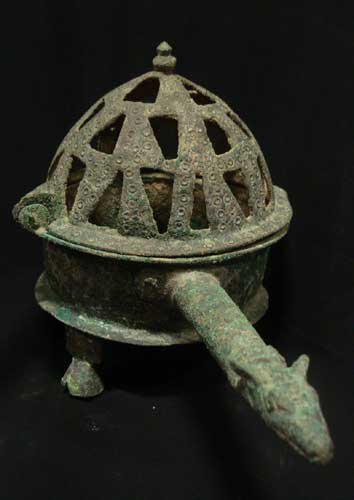Bronze Pierced Incense Burner, 700 CE - 900 CE
Bronze
8 x 4.7
AMD.212
This type of incense burner, known as the western example, was already known in the Coptic and early Islamic periods. It reveals the most important characteristic of western types. The...
This type of incense burner, known as the western example, was already known in the Coptic and early Islamic periods. It reveals the most important characteristic of western types. The body is cylindrical and the lid is of domical shape. The top part of the incense burner has extensive openwork decoration, which appears to be one of the dominant features. The openings on the lid were made to emit incense. The handle is long and is decorated by a wolf at the tip.
Highly scented incense was a valuable commodity in the Islamic World, and has been since ancient times, when caravan laden with incense and other precious items travelled across Arabia.
The Incense Route was a series of major trading routes stretching across Egypt to India, and through Arabia. The incense trade flourished from South Arabia to the Mediterranean between the 3rd century BC to the 2nd century BC. This route served as a channel for trading goods.
Highly scented incense was a valuable commodity in the Islamic World, and has been since ancient times, when caravan laden with incense and other precious items travelled across Arabia.
The Incense Route was a series of major trading routes stretching across Egypt to India, and through Arabia. The incense trade flourished from South Arabia to the Mediterranean between the 3rd century BC to the 2nd century BC. This route served as a channel for trading goods.



